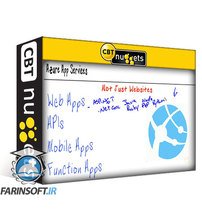در حال حاضر محصولی در سبد خرید شما وجود ندارد.

This intermediate Juniper JNCIS-SP training prepares learners to take the JN0-363 exam, which is the one required exam to earn the Juniper Networks Certified Specialist: Service Provider (JNCIS-SP) certification.
Taking fundamental knowledge of routing and switching implementations in Junos one step further, this Juniper Networks Certified Specialist: Service Provider is aimed at networking professionals who need more advanced tactics and approaches to configuring Juniper networks, particularly for service provider networks. The topics of this course include more advanced approaches to networking, like multiprotocol label switching, tunnels, spanning-tree protocols and Layer 2 bridging. The specialist certification JNCIS-SP is the first of Juniper’s three specialized certifications in service provider network administration.
در این روش نیاز به افزودن محصول به سبد خرید و تکمیل اطلاعات نیست و شما پس از وارد کردن ایمیل خود و طی کردن مراحل پرداخت لینک های دریافت محصولات را در ایمیل خود دریافت خواهید کرد.


Microsoft Certified: Azure Fundamentals (AZ-900) Online Training

فیلم آموزش Azure App Services
--Configure-and-Verify-NETCONF-and-RESTCONF-main-resized.jpg)
آموزش کامل 350-401 ENCOR : پیکربندی و تست صحت NETCONF and RESTCONF

کورس امنیت CCNP

کورس مدیریت سرور : عیب یابی

CompTIA Server+ Online Training

Microsoft Certified: Azure Database Administrator Associate Online Training
-main-resized.jpg)
فیلم یادگیری کامل Cisco Enterprise Advanced Routing and Services (300-410 ENARSI)

فیلم یادگیری Cisco CCNP 300-420 ENSLD
--Automating-Devices-with-the-RESTCONF-Protocol-main-resized.jpg)
آموزش کامل 350-401 ENCOR : اتومات کردن سخت افزارها با پروتکل RESTCONF
✨ تا ۷۰% تخفیف با شارژ کیف پول 🎁
مشاهده پلن ها